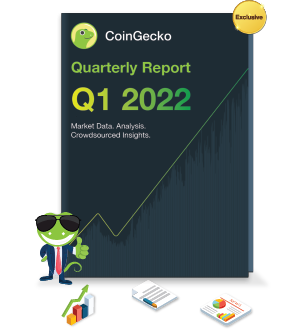
Download the report now
You will also receive our daily newsletter
By entering your email address, you agree to be subscribed to our daily newsletter where you will get the latest crypto news and trends. You can unsubscribe anytime.
Home > What is Oasys?
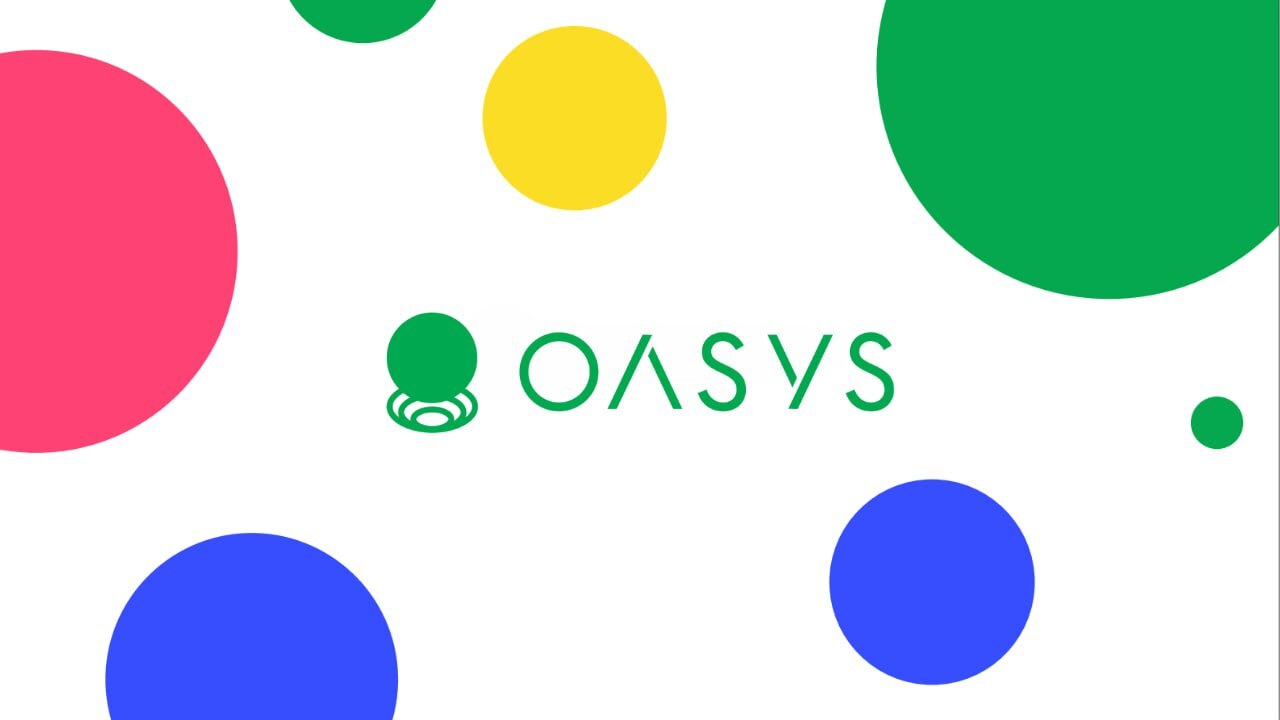
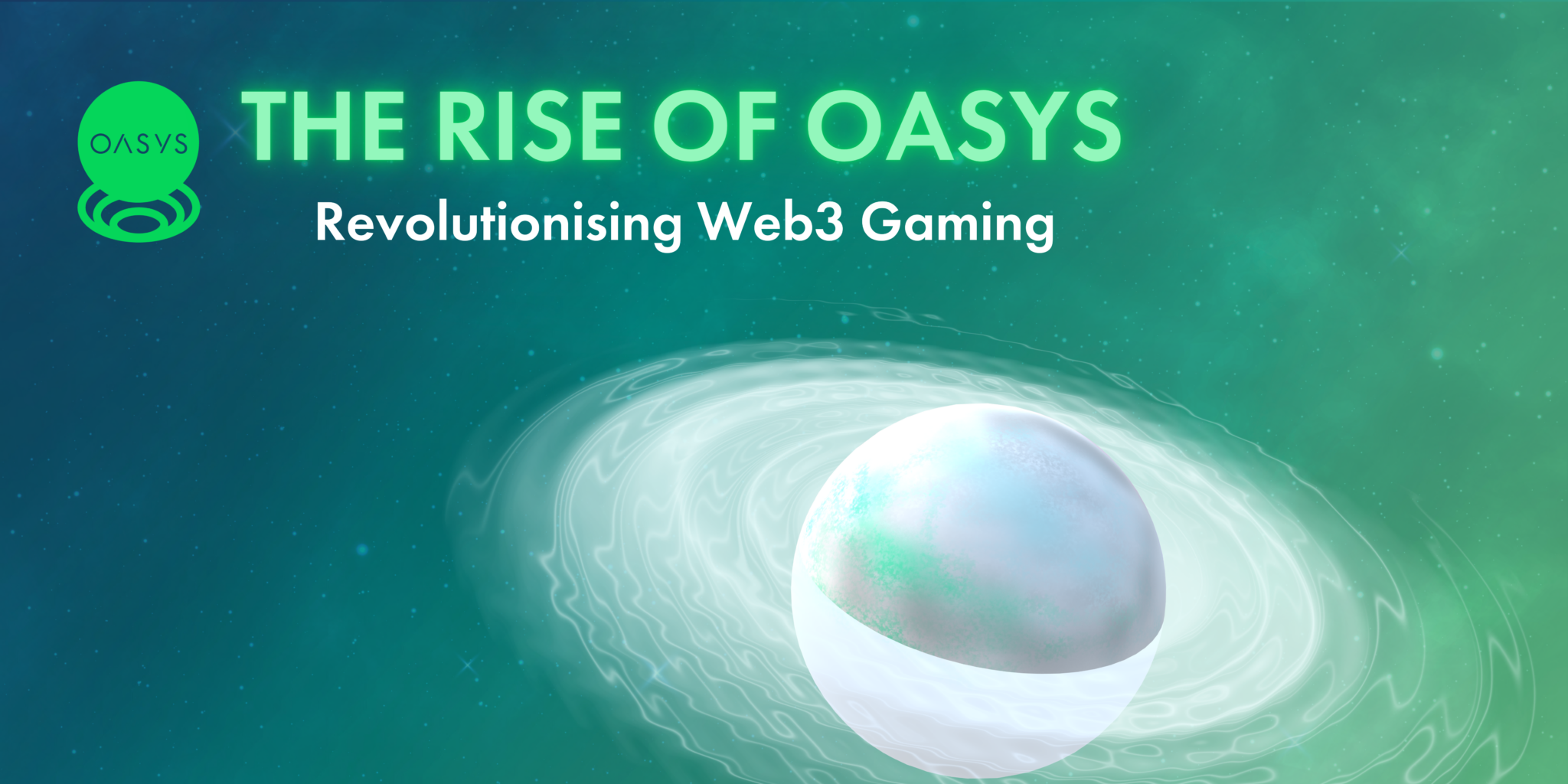
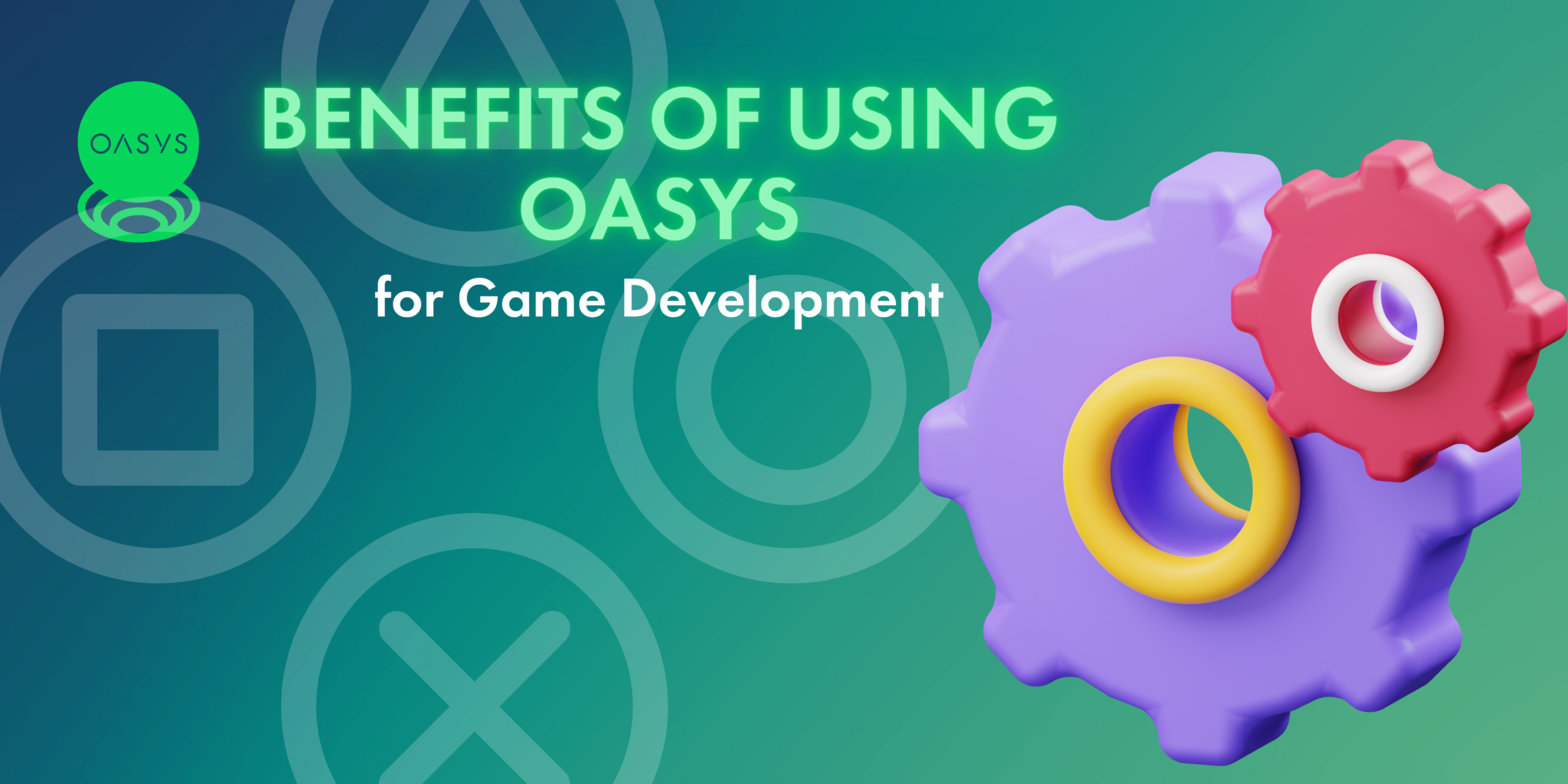
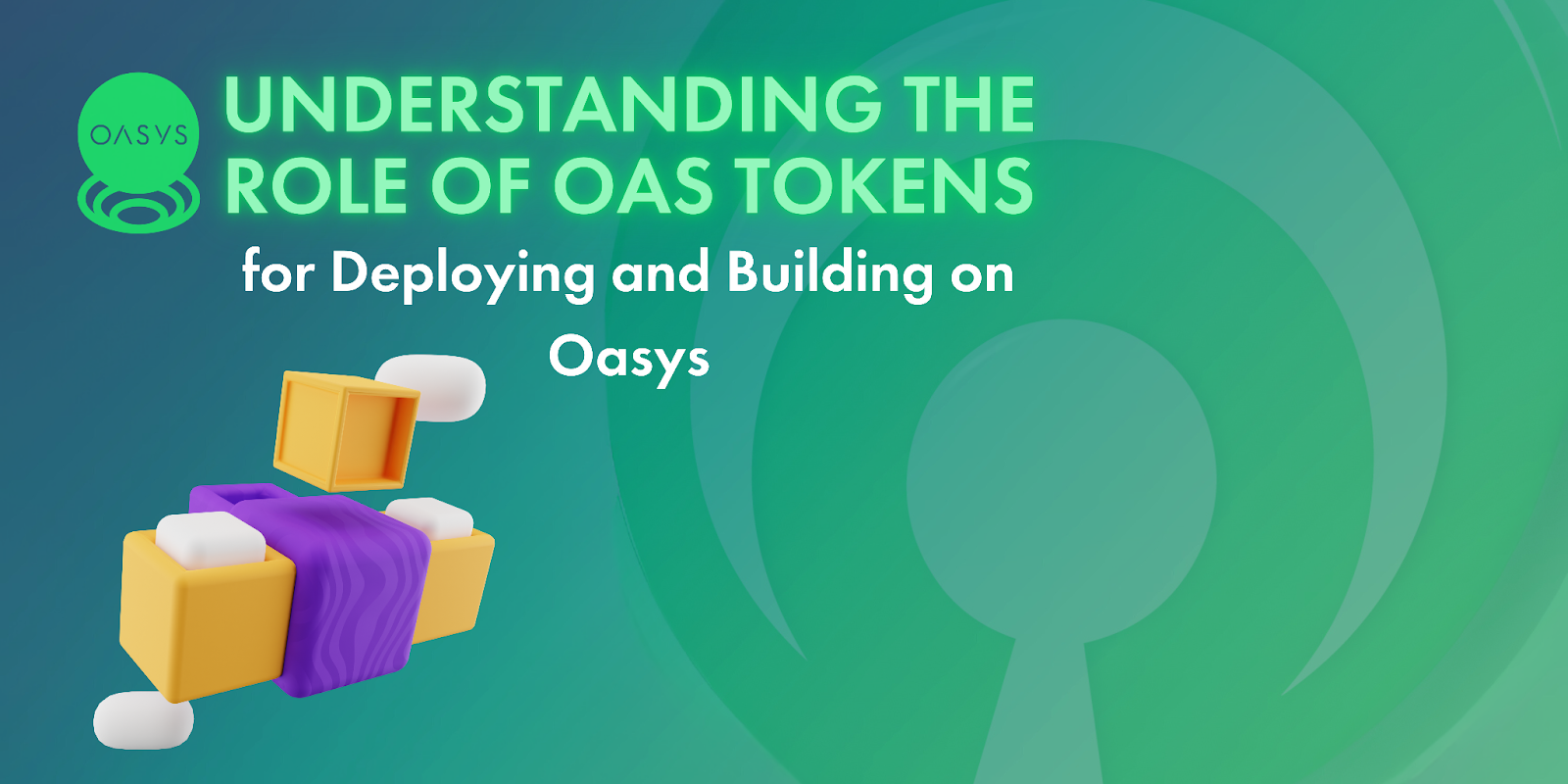
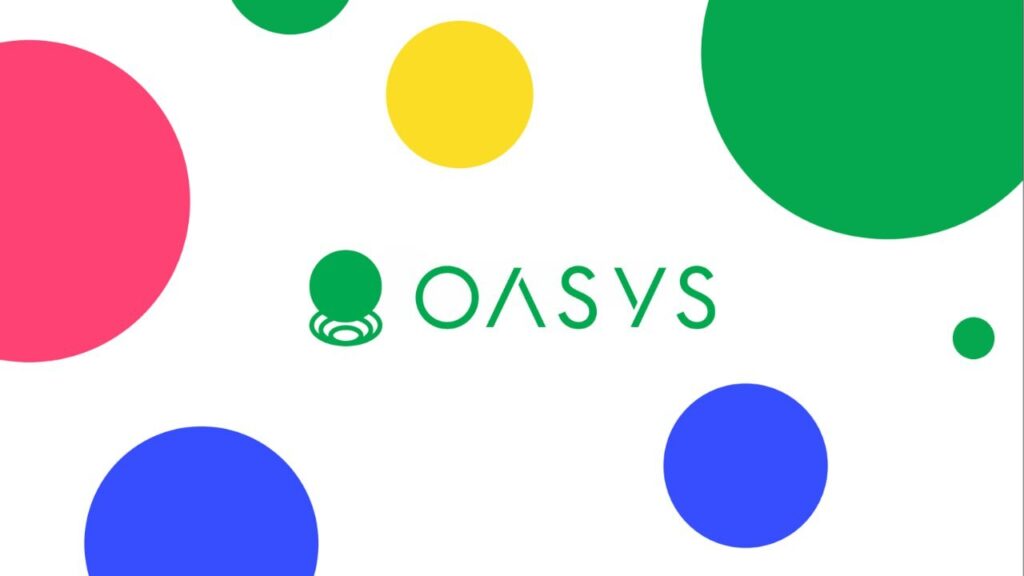
Oasys is a game-optimised blockchain that offers a highly scalable Layer 1 hub and specialised Layer 2 using Ethereum’s Layer 2 scaling solution. The ecosystem provides game developers with a secure and scalable blockchain infrastructure for creating more efficient, secure, and interoperable games. Among Oasys’ validators are leaders in gaming and Web3, such as SEGA, Ubisoft, and Yield Guild Games, who act as initial validators in our Proof-of-Stake (PoS) based blockchain. Oasys’ expert blockchain team, combined with the biggest names in gaming, is revolutionising the gaming industry.
Oasys solves the challenges that game developers face when building blockchain-based games by focusing on creating an ecosystem for gamers and developers to distribute and develop games. The company’s trifecta approach includes a fast network powered by the gaming community, a scalable network powered by AAA game developers, and a blockchain that provides the best user experience with fast transactions and zero gas fees. This approach prepares participants to enter the Oasys and play.
Learn more about Oasys:
Lesson 1
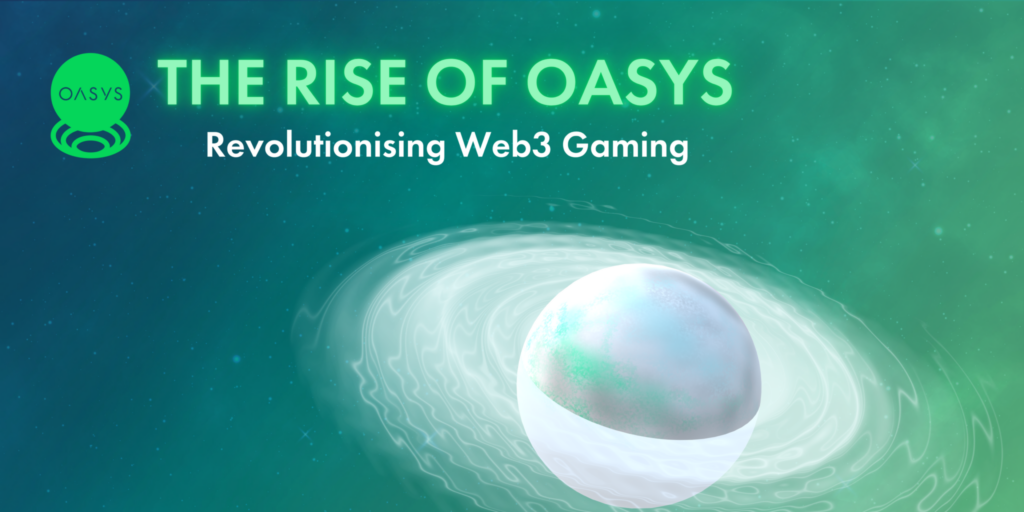
The digital universe is in the midst of a transformative epoch. With the emergence of Web3, the gaming sector is undergoing revolutionary shifts, setting the stage for a new era of immersive, decentralised experiences. Web3 gaming, anchored by blockchain technology, cryptocurrency, and non-fungible tokens (NFTs), is not just a fleeting trend; it’s a paradigm shift that is redefining the very fabric of interactive entertainment.
At its core, Web3 is democratising the gaming sphere. Unlike traditional models, where power and control rest primarily with game developers or corporations, Web3 places unprecedented authority directly in players’ hands. This shift means that the value, achievements, or assets players acquire in one game can be transferred or recognised across a myriad of games within the expansive Web3 ecosystem. Such a model is a game-changer, both figuratively and literally.
To understand the meteoric rise and potential of Web3 gaming, consider this: projections suggest that Web3 will usher in anywhere from 10 million to a staggering 100 million gamers within the forthcoming year or two. Such explosive growth isn’t mere speculation. Every year, gamers spend over $100 billion on in-game items alone. If this trend continues, Web3 gaming will witness an unparalleled wave of adoption, a momentum it previously lacked.
In the dynamic world of Web3, Oasys emerges as a beacon of innovation. Designed to address the challenges of blockchain games, Oasys introduces an eco-friendly blockchain, ensuring efficient and seamless transactions for gamers and game developers.
The strength of Oasys lies in its mission to be more than just another Web3 platform, but a transformative force in the Metaverse, underpinned by sustainability and developer-focused innovation. Oasys emerged from the real-world challenges faced by game developers during the creation of the blockchain game, MyCryptoHeroes, which has since ranked No. 1 globally in transaction volume and DAO as an Ethereum-based blockchain game from 2018 to 2019.
The Web3 gaming arena is undergoing rapid transformation with the introduction of specialized blockchains like Oasys – tailored specifically for gaming. Noticing that prevailing blockchain platforms failed to address the unique demands of mainstream games, Oasys was conceived. While the underlying technology of each Hub and Verse is straightforward, the dual-layered architecture was crafted with a singular focus: offering an unparalleled user experience for both gamers and developers, emphasising simplicity while ensuring versatility and adaptability.
The team behind Oasys brings expertise from traditional gaming as well as the blockchain sectors. Recognising that existing blockchain solutions weren’t tailored for the specific demands of popular games, a team of renowned game companies crafted the unique architecture of Oasys with the intent to be both versatile and adaptable for evolving Web3 gaming needs.
In the next stage of the Internet, digital traversing between different “Metaverses” will be as seamless as toggling between social media platforms today. Facilitating this transition, Oasys concentrates on addressing interoperability challenges between fragmented Metaverses and gaming platforms, predominantly through blockchain technology and NFTs to authenticate digital asset ownership across different chains.
Oasys is positioning itself as the go-to hub for game developers with plans to offer all the tools, SDKs, digital assets, interoperability and environment they need for crafting exceptional web3 games. This includes the seamless distribution through Oasys Navi – a web directory showcasing game titles and Verses on Oasys and Oasys Passport, a user-friendly blockchain wallet optimised for blockchain gaming. Oasys Passport offers an effortless setup without the usual email and password hassles, automated transitions between multiple Verses (Layer 2 chains), and a user-centric design that deciphers Web3 jargon. This commitment to accessibility, led by double jump.tokyo, is further amplified by upcoming features like unified NFT displays, visual representations of in-game assets, and an integrated bridge for swift access to various games across different Verses, positioning Oasys as a leading, user-friendly choice in the blockchain gaming realm.
As the Web3 gaming industry evolves and expands, Oasys has strategically aligned itself with key industry players to streamline and elevate the gaming experience. Taking a significant leap towards industry dominance, Oasys is bolstered by a series of powerful collaborations. A testament to its strategic position is a collaboration with Ubisoft that will see the gaming giant deploy their avant-garde PVP Tactical RPG, “Champions Tactics™ Grimoria Chronicles,” on Oasys Chain.
Before Ubisoft’s venture into the world of blockchain games (BCG), SEGA and double jump.tokyo revealed Battle of Three Kingdoms — a brand new blockchain TCG created using SEGA’s iconic arcade game IP, Sangokushi Taisen.
Additionally, Bandai Namco’s foray into AI-driven gaming saw the launch of RYUZO, a blend of creativity and innovation facilitated by Oasys in combination with OASYX – the first-ever NFT project minted on Oasys’ Hub-Layer.
Beyond game titles, the backbone of Oasys’s reputation is its validators with tech giants like Com2uS, double jump.tokyo, MIXI, and DMM.com/DM2C Studio demonstrating their trust by becoming validators of our blockchain. With industry veterans like Sega, KDDI, Rakuten Wallet, Bandai Namco, Astar, and Com2us, endorsing and building on Oasys Chain, it’s evident that Oasys isn’t just another blockchain—it’s setting the gold standard in Web3 gaming.

Backed by established gaming giants and a roster of validators, we’re laying the groundwork, offering the necessary resources, scalability, and tools to ensure the creation of Web3 games is both secure and straightforward. Our mission is to collaborate with industry veterans to facilitate their entry into Web3, making blockchain games fun, engaging and profitable for users and developers alike.
Discover more and simplify your game development journey with Oasys, the all-inclusive platform dedicated to building, deploying and amplifying Web3 games for the mainstream audience.
Lesson 2
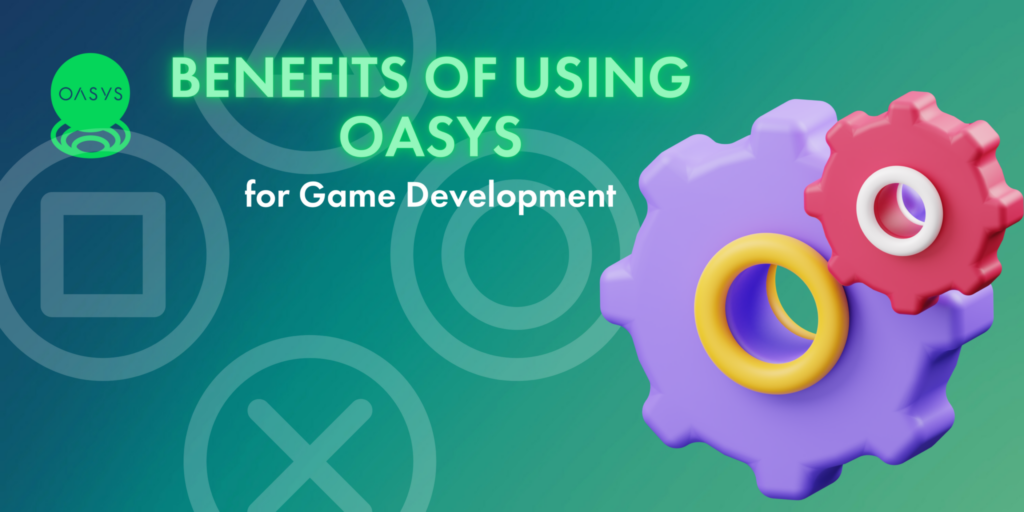
Blockchain gaming is transforming the multi-billion dollar traditional game industry, luring non-crypto enthusiasts to the world of Web3. The advent of decentralised games is rapidly gaining ground, propelled by the extraordinary capabilities of making digital ownership of in-game assets possible through blockchain. With robust in-game economies and new ways to engage with and experience the digital realm, blockchain gaming is gaining the attention of players. In August 2022 alone, 847,000 daily Unique Active Wallets (UAW) interacted with blockchain games.
The future of gaming is here with endless possibilities and new opportunities, and it’s exciting! The rise of game-focused blockchains has allowed seamless interaction between public blockchains and immersive games, bridging traditional Web2 and Web3 gaming. Whether you’re a budding developer or an avid gamer, understanding these gaming chains is crucial to unlock the potential of Web3 gaming.
For developers ready to deep-dive into this realm, Oasys provides a comprehensive suite of tools and services for creating and deploying games with a smooth, uninterrupted user experience.
Incorporating Web3 into game development is becoming a pivotal move, and Oasys stands out as a prime blockchain for this integration. The design and features of Oasys prioritise efficiency and functionality, ensuring a streamlined environment for developers and players.
For developers, there’s the assurance of security, scalability and flexibility via a proprietary Verse. Oasys’ L1 Hub-Layer incorporates specialised Verse Layers using layer 2 technology with a focus on game logic to streamline development. Developers can utilise these Verse Layers to interact with Oasys’ Hub-Layer, deploy their games, or even act as verse builders to launch third-party titles.
The transaction data from the Verse-Layer is rolled up and sent to the Hub-Layer. Oasys validators, composed of game developers, enhance data availability to secure Verse transactions. Since verse operators cover gas fees – users pay zero gas when interacting with the Verse-Layer. For those that require faster confirmation – Verses that integrate an Instant Verifier can achieve immediate approvals on the Hub-Layer for instant transactions.
As an EVM-compatible Chain, Oasys allows developers to scale efficiently by leveraging the Ethereum network’s expansive effects for:
Players, on the other hand, benefit from a seamless experience characterised by gas-free transactions and swift processing times. Products like Oasys Passport provide user-friendly login for quick and easy access to Oasys services. The entire Oasys ecosystem is designed to simplify Web3 onboarding for gamers and developers!
Oasys goes beyond the standard all-purpose L1 chain to enable more trustless gameplay mechanics on an additional layer that underpins the entire ecosystem. Put simply, Oasys is a blockchain designed for games where every element is built from a gaming-centric perspective to massively reduce the time and effort to bring BCG games to a mainstream audience.
This reflects the core ethos of the Oasys brand – solving the challenges developers encounter when trying to build scalable games and immersive gaming experiences. Our foundation is deeply rooted in addressing these real-world issues, delivering the robustness the developer community requires for long-term growth and sustainability.
Asia is a powerhouse in the Web2 and blockchain gaming landscapes, with Japan holding the third spot in the global Web2 game market along with giants like South Korea and China. Leveraging Japan’s favourable regulatory framework, Oasys sets the stage for even greater blockchain gaming growth. Deeply rooted in Japan’s rich gaming traditions that go as far back as the 1980s, Oasys has become a part of its vibrant gaming culture. We don’t just understand the Japanese market; we’re part of its DNA. And we’re not stopping there. Our alliances in Korea are opening doors and building bridges for game developers and players alike.
The team behind Oasys has first-hand experience with Web2 gaming. Oasys boasts strong alliances not just with major players in the Web2 and Web3 gaming industry like SEGA, Bandai Namco, Com2uS and double jump.tokyo, but also with Japanese and Korean companies who specialise in the complexities of blockchain games. These collaborations ensure that developers have access to both breadth and depth of expertise, multiple third-party integrations and value-added services and tools.
With the popularity of Web3 games surging, particularly in Japan, Oasys’s strong presence in the Asian market positions it as the best multi-layered ecosystem for developers who want to build mainstream-ready Web3 games.
Developers keen on leveraging the best of Web3 for their games would do well to understand the capabilities and strengths Oasys brings to the table. Our ecosystem seamlessly blends blockchain technology with traditional Web2 game development mechanics, paving the path for the future of gaming.
If you are a game developer and looking for a Verse to onboard your game, check out the Verse builders contact list to find the Verse that best fits your game. If you are interested in building your own Verse or are unsure which Verse to choose, please use the contact form on our website or open a ticket in Discord to get in touch with the Oasys team.
Lesson 3
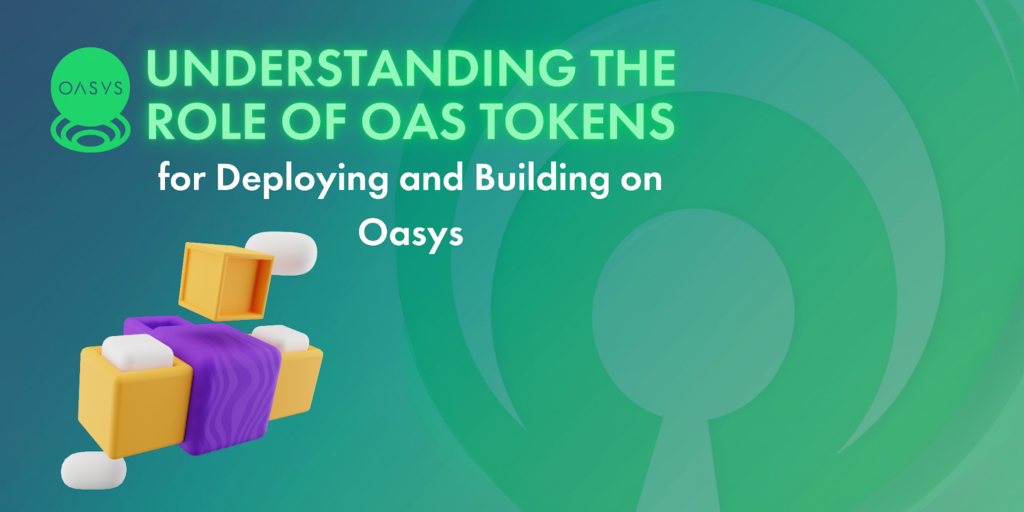
The native token of the Oasys ecosystem, $OAS plays a crucial role with a diverse range of utilities, staking opportunities, and governance functions. This article will explore the various aspects of $OAS and its significance within the Oasys network. The applications of $OAS differ from the perspective of users, developers, validators and delegators. Understanding the subtle differences and how $OAS underpins the broader economy of Oasys is the first step in understanding the extensive ecosystem and the coming developments that await Oasys and its native token.
The $OAS token is integral to the Oasys ecosystem, functioning as its core currency. For developers, understanding the utility of the $OAS token is key, especially in how it relates to transactional operations and ecosystem participation.
Within the Oasys architecture, actions that require transactional finality, such as rolling up transactions from a Verse-Layer to the Hub-Layer, employing a Bridge contract, or executing contracts on the Hub Layer, necessitate the payment of gas fees. Verse Builders are responsible for these costs, and with the expansion of the ecosystem—characterised by an increase in Verse-Layers and transaction volume—there’s an expected incremental rise in gas fees. The architecture, however, is designed to ensure that this increase is measured, allowing Verse Builders to scale their operations without disproportionate cost increases adversely affecting their growth.
Developers looking to contribute to the Oasys ecosystem by creating new Verses must make a substantial commitment in the form of $OAS token deposits—exceeding 1 million $OAS—when establishing a Verse contract. This deposit is a strategic move to promote the ecosystem’s integrity, deterring the development of fraudulent Verses and securing the developers’ long-term investment and participation in the ecosystem.
$OAS tokens also serve a crucial role in facilitating transactions within the ecosystem, particularly for in-game micropayments. This is similar to ETH’s role in the Ethereum ecosystem, where it’s the primary medium for transactions. The versatility of $OAS tokens in handling a multitude of micropayment transactions both within and beyond game environments underscores their importance as the key currency across the Oasys ecosystem.
In addition to the above roles, $OAS tokens allow holders to participate in the decentralised governance of Oasys. This process involves voting on key proposals, which could range from altering inflation rates via staking mechanisms, deciding on treasury allocations, to choosing which contracts to build on the Hub-Layer. This element of governance places a significant portion of the ecosystem’s direction and evolution in the hands of its token holders, embodying the principles of a decentralised community-driven environment.
Finally, $OAS tokens offer staking rewards as an incentive for long-term holding and ecosystem support. Users staking 10 million $OAS or more through a validator contract can become validators themselves. This process not only provides stakers with rewards but also plays a critical role in securing and maintaining the network’s integrity. Through staking, users can contribute to the ecosystem’s stability while earning rewards, aligning their interests with the overall health and growth of the Oasys ecosystem.
In the Oasys ecosystem, the token economy is devised to support its dual-layer architecture, consisting of the Hub-Layer (L1) and various Verse-Layers (L2). This structure is designed to overcome the limitations of a single-token system by introducing $OAS tokens for the Hub-Layer, with individual Verse and Game/dApp Tokens to foster a versatile and scalable gaming environment. As the ecosystem matures, it adapts to host an array of Verses, each with unique economic models, to cater to diverse gaming and Dapp communities. The token system in Oasys, therefore, plays a crucial role in maintaining flexibility and encouraging innovation within the network.
The Oasys architecture includes a multi-faceted bridge system, integral for connecting the Hub and Verse-Layer, and facilitating interactions with external chains.

Tealswap enhances the Oasys ecosystem by managing the user interface and experience for asset transfers. It utilises two types of bridges: the Oasys-Verse L1<>L2 Bridge, operated by individual verses for internal transfers, and the cBridge (Cross-chain Bridge), handled by Celer for external transfers. This setup allows Tealswap to streamline the process of moving assets both within and outside the Oasys network.
The Oasys-Verse Bridge is the internal bridge, connecting the Oasys Hub (Layer 1) with various Verse-Layers (Layer 2). This bridge supports the transfer of fungible tokens, allowing users to seamlessly move assets between the Hub and multiple Verses, including TCG Verse, MCH Verse, HOME Verse, Chain Verse, and Saakuru Verse. As we continue to expand the Oasys ecosystem and add new Verses, this will further extend the bridge’s reach.
For interactions beyond the Oasys network, Tealswap uses cBridge, an efficient solution for transferring assets to and from external blockchains such as Ethereum and Polygon. By integrating cBridge, Tealswap opens up cross-chain functionality, enabling the exchange of tokens between Oasys’s mainnet and partnered networks. This integration reflects a commitment to interoperability and user convenience, offering a seamless bridging experience for a broad range of assets within the decentralised finance landscape.
A unified UI, such as the one provided by Tealswap, simplifies user interaction with these bridges, consolidating them into a single access point. All bridges within the Oasys network are free. Only using Celer’s cBridge incurs a fee but ensures rapid transfers, demonstrating Oasys’s commitment to providing versatile and user-friendly bridging solutions for its community.
Oasys prioritises security in bridge operations, employing measures to protect against hacking without the need for centralised liquidity pools. The security-first approach benefits developers by providing a dependable infrastructure for deploying secure, scalable applications.
The confirmation time for state commitments in the Oasys network has been optimised for efficiency. The standard seven-day challenge window for commitments can be bypassed by instant verification from validators, enhancing user experience by reducing wait times for transactions.
In the Oasys ecosystem, the $OAS token assumes a central role, serving as the foundational currency that facilitates utility across the network’s L1 and L2 layers and providing holders with a range of utilities, staking possibilities, and governance privileges. Furthermore, $OAS token holds utility within decentralised applications, partner chains and games, and smart contracts.
As Oasys’ adoption expands, the potential for $OAS to become a preferred payment method among brands could lead to broader recognition and integration within the crypto economy. This aligns with Oasys’s vision of a multi-token economy where decentralisation and governance converge, promoting a robust and collaborative environment. The $OAS token’s integration within the Oasys and Tealswap infrastructure underscores its essential role in driving the network’s growth and facilitating seamless asset transfer between the Hub and Verse-Layers, as well as external blockchains. This cohesive token strategy ensures that the Oasys ecosystem remains adaptable, scalable, and primed for future expansion.
Learn more about building on Oasys and make your game Web3-ready with a blockchain optimised for gaming.

By entering your email address, you agree to be subscribed to our daily newsletter where you will get the latest crypto news and trends. You can unsubscribe anytime.